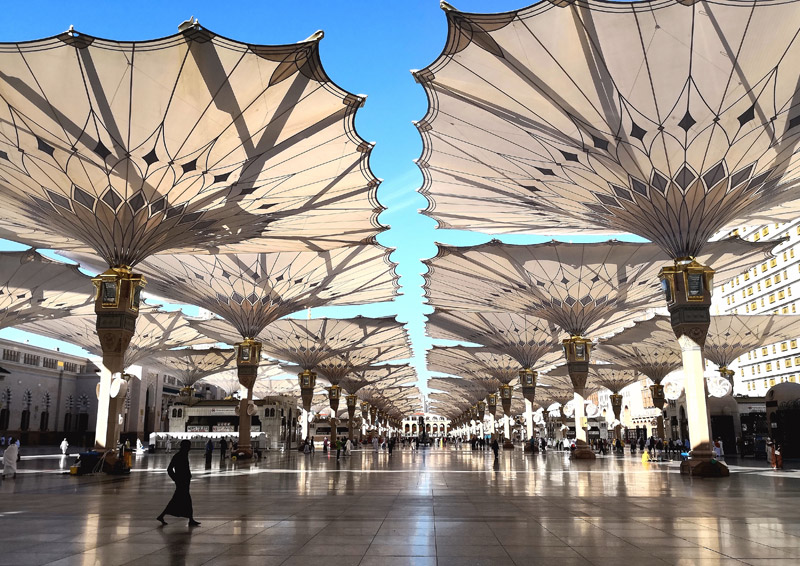An Emeritus Professor in the School of Engineering, University of Warwick, UK, a Fellow of the Institution of Civil Engineers and the Royal Society of Arts, Wanda J. Lewis, examines how form-finding can be used in the design of rigid structures.

- Updated: 02 Jun 2020
- Author: Wanda J. Lewis
In the UK, we use 2.5 times more material in construction than the sustainable amount of resources, as reported by Jackie Whitelaw, “Round and Round”, New Civil Engineer, November 2018, 32-34). This fact, combined with climate change, demands a serious re-think and, where possible, a transformative change in the current structural design, in response to the needs of our planet, and our future infrastructure.
A change is possible, if form-finding can be incorporated into the conceptual design process. The concept is not very well known outside the field of tension structures. These are structures made of fabric or cable, with the umbrella canopies in the Piazza in Madinah, Saudi Arabia, as one of a number of impressive examples world-wide. Tension structures cannot have their shapes imposed by our intuitive sense of aesthetics; their configuration has to be found by a form-finding process that employs iterative computation aimed at matching the equilibrium shape with the level of pre-stress. Various computational form-finding algorithms exist for this purpose, and they are described in Tension Structures: Form and Behaviour, but the one implementing the natural principle of constant stress – a feature observed in highly optimised objects shaped by nature (trees, bones, shells) - comes to the forefront of all of them. The umbrellas in Madinah have been shaped by the analogy to soap-film surfaces - natural objects reflecting the constant stress principle that produces a minimum surface area and material usage.
How can form-finding be used in the design of rigid structures?
This is an area of current research, but broadly speaking, the design is reverse engineered. In the cases of arches, for example, the configuration of the structure (within a given design space, such as span and rise) is found as a function of the loads applied and stresses allowed to develop within it. Thus, the ‘shape’ equation, describing the structure’s configuration, can ensure its minimal response to loading. Consequently, such a structure uses less material and have improved durability. Chapter 6 of Tension Structures: Form and Behaviour discusses the relevance of shape equations for tension cables to the modelling of optimal forms of arch structures.
[MISSING IMAGE]
It is known that the shape of a hanging cable, when inverted, gives a perfect form for a free-standing arch. This idea was exploited in the design of the iconic Gateway Arch in St. Louis, USA, but, as shown in the book, the arch shape is not that of an inverted cable of constant axial stress, which would have offered a more optimal solution. Arches developing constant stress under their own weight use less material, compared to arches with varied stress, as the latter carry excess material (in the areas of lower stress).
Apart from arches, other civil engineering applications of the form-finding approach may be used in the design of domes and dams, with mechanical and biomedical engineering fields offering exciting opportunities for minimisation of material usage and enhanced durability.
If you want to learn more about the constant stress principle in form-finding design and its link to nature, as well as the iconic structures, such as the Gateway Arch in St Louis, or the multi-million umbrella project in Madinah, please consult the book, Tension Structures: Form and Behaviour, Second edition, available in print and as an eBook.
